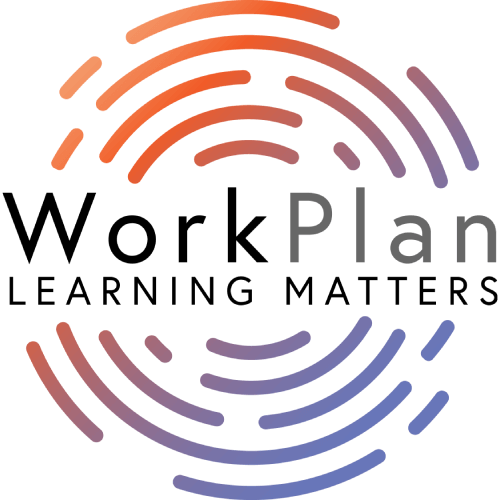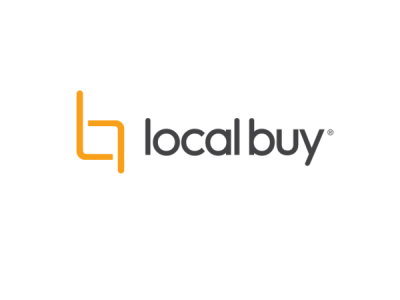WorkPlan shares everything you need to know about Internal Communications Mapping
Informal networks form a strong basis for the social capital of an organization. Most leaders either discount the importance of informal networks or rely on intuition to guide them in interacting, identifying thought leaders, influencers, and persons with leadership skills. Some leaders of organisations may see informal networks as impediments to decision-making and execution of strategy.
Mapping informal networks will unlock insights into key people that may be influencing culture both positively and negatively. When informal communication networks are mapped, they can be leveraged to choose the best communication channels, feedback channels and improve the adoption of cultural change initiatives and improve engagement overall.
Four primary roles in the communication map.
I break the communication map into four primary roles that people play in the map. These roles exist regardless of position or stature in the organization; this model is not intended to be all-encompassing. The four roles serve this model well and provide some focus and insight into observable work environments and remote communications behaviours.
Role one: The Central Connector
This person is rarely the formal leader within a group, but they do know who can provide critical information that can expedite a project, assist with an internal process and know how to get decisions made.
Role two: The Boundary Spanners
These are the people that connect informal networks to other informal networks both inside and outside the organisation.
Role three: The Information Brokers
This role involves keeping sub-groups within the informal network together and often are sought for personal and professional advice.
Role four: The Peripheral Specialist
This role is typically not as engaged in information networks and tends to prefer working alone. The Peripheral Specialist is a person who is regarded as a specialist in a domain of knowledge not shared by others in the organisation.
The Central Connector; where communication and activity flow.
Who is the person that everybody seems to be speaking to the most? In most cases, the Central Connector is not the formally designated person to go to in the team or department. As an example, these people are often consulted on topics by many different people and the Central Connector may offer assistance and information or guide the person to another person who can assist. The Central Connector is the conduit through which much communication and activity flow.
Much of the communication and activity is vital to a healthy culture and execution, yet senior managers may not see this activity and therefore goes unrecognised and unrewarded. If the Central Connector remains unrecognized, the behaviour is likely to stop, and the person becomes frustrated at the amount of time or energy spent. One outcome of developing a communication map is enabling recognition of Central Connectors and encouraging their contribution to the health of the information communication networks and the organisation overall.
Although most people who perform as Central Connectors operate in the best interests of the organisation, there is the risk that a Central Connector may not be operating with the organisation’s best interests at heart. The role of a Central Connector may negatively impact other individuals and the overall culture. Once identified in the Informal Communication Map, Central Connectors are better able to monitor if there are other indications that they are adversely impacting communications and relationships.
How to find a Central Connector
- Who is receiving most of the general and specific informal communication in the group or the broader network?
The Boundary Spanner; connecting groups.
The Boundary Spanner is the ‘roving ambassador’ who serves as the ‘eyes and ears’ to the broader world. The Boundary Spanner connects groups and does so by connecting the Central Connectors from diverse groups and networks. The Boundary Spanner connects groups that may be in different offices, in other organisations, suppliers, professional associations etc. The Boundary Spanners are especially useful when project teams need to collaborate, or different areas of expertise need to be accessed. Boundary Spanners are the rarest of the four types in this model.
The Boundary Spanner is the person who has the intellectual expertise, the social contacts, and the personality traits necessary to be accepted by a wide range of distinct groups. Corporate life is not usually the best for Boundary Spanners who spend much time developing external networks. Leaders who have identified the Boundary Spanners in their organisations can focus their energies on developing connections with other groups that are most likely to provide benefit to the organisation.
Where are the Boundary Spanners?
- Who is introducing Central Connectors to other groups inside or outside your organisation? For example, who is the main conduit of information communication between your offices in Sydney and Brisbane?
Information Broker; effective informal operation.
The Information Broker is like the Boundary Spanner; however, the Information Broker is limited to the social network of the sub-networks in an organisation. While the Boundary Spanner connects groups, the Information Broker is working within the sub networks that comprise a group.
Information Brokers tend to only have a couple of degrees of separation between themselves and most others in the organisation. Information Brokers are the most important for the effective operation of the informal network. Information sharing with Information Brokers is recommended. The departure of a key Information Broker may have negative repercussions on the culture of the organisation. Once identified, it is advised that senior managers are aware of the influence of Information Brokers and maintain awareness of the flow of information from them.
Do you have an Information Broker?
- Who has the greatest wealth of indirect associations? This person may not have the number of direct connections as the Central Connector; however, the information broker has many indirect associations with people within one or two larger groups to cover large areas of het organisation. The Information Brokers are the ‘glue’ between the sub-networks.
Peripheral Specialist; the outsiders.
The Peripheral Specialist are the ‘outsiders’ of the network and these people may be new hires or those who have not fully integrated yet. The Peripheral Specialist is a person who stays at the leading edge of their area of expertise, and they often come from a technical, informational, or research-based area. These people are on the periphery by choice.
Peripheral Specialists contribute more if they are integrated into the group. However, a Peripheral Specialist will quickly become frustrated if this integration reduces their ability to maintain their knowledge and skills at the leading edge.
Some of my clients that have identified Peripheral Specialists in their organisations have leveraged their expertise into new products and services; for example, commercialising intellectual property, speaking opportunities and consulting.
How to find a Central Connector
- Who is receiving most of the general and specific informal communication in the group or the broader network?
- Who offers technical expertise but is not in the normal flow of communication and information through the group?
My Top Tips on How to Manage Your Personal Informal Communications Map
- Ideally, create the map in a visual way rather than a standard document.
- Once created, test the veracity of your map by observing interpersonal, online and digital communications between people.
- Your map will change as people join or leave your organisation. People will change positions in the organisation and this may impact their role in informal communications.
- Identify the key channels for informal direct communications to specific or broad audiences.
- Present the Communication Map to others for feedback on accuracy.
- Use the map to help others improve their informal communications and networks.
- Use the map when assessing cultural issues.
- Prepare your decision making and how you communicate decisions using the map to support informal communication.
- Use the map to support your recruitment for new or existing roles. Are you lacking a person(s) to fill one of the four informal communication roles?
- The map is particularly useful in succession planning, restructuring, digital transformation, and other change initiatives.
Getting Started
- Mind mapping or diagramming software is ideal for creating your map. I can suggest some that have been used by my clients.
- Use lines to show the direction of relationships. An arrow pointing to a person shows a person being sought for information, advice etc. An arrow pointing away from a person indicates a person seeking information, advice etc.
- You could use an organisation diagram if that makes sense and improves clarity.
Collecting Data for Your Map
- Observation of people in all situations both formal and informal.
- Confidential survey forms.
- Asking questions in conversations with people.
- Reviewing communication channels like Teams and Slack to get a feel for people engaging in information sharing, questions, and advice.
The map below is based on a small project team. It is a simple illustration of an Internal Communication Map.
Maps may be much more complex than what is shown here:

ALSO READ: Are You Still Using Emails To Manage Your Workflow?
Learn about WorkPlan Learning
WorkPlan Learning is a collaborative LMS designed to empower your employees to build and share their knowledge.
Contact us for a free demo.
Related Articles
Are you ready to take your business to another level?
Contact us today
Head Office
1300 726 708
+61 7 3220 2229
Melbourne Office
+61 3 9752 5651
In the spirit of reconciliation WorkPlan acknowledges the Traditional Custodians of country throughout Australia and their connections to land, sea and community. We pay our respect to their Elders past and present and extend that respect to all Aboriginal and Torres Strait Islander peoples.



